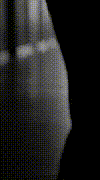Re: Power Supply
qjakal said:
First thing I always upgrade if I buy a puter instead of building it is the power supply. Saves a LOT of hassles eventually. Always need more fans too....lol. There...fresh outta wisdom now! Q
Excellent points Q, I can't count the number of problems I've dealt with which have been the direct result of older or cheap power supplies. While I am sure you obviously understand this, I'll elaborate a little for others who may not.
Computers from preassembled companies such as Gateway, or Dell, or any of a hundred other names on the market (or even if you are thinking of assembling one yourself), used to ship their products with just enough power to get by. When upgrades are performed on those computers, the power simply isn't adequate to run the newer cards. Also, although they may be rated high enough, say, 300w or even 400w, the components in the power supplies may be cheaper, of lesser quality, so the power is not necessarily
quality, stable power. Those cheaper power supplies may send varying voltages to memory, slots, or even the processor. Varying power can cause a plethora of symptoms that at first glance would not seem related to power, such as, random restarts, random freezes, video hangs, sound card crashes, network disconnects, garbled files on the disk, an increase in bad sectors on a disk, and actually many others. The PC order companies have gotten better with the quality of the components, but I cannot stress the importance, as Q says, of making *sure* you have a high quality, steady power supply with enough power to run everything (including fans) you *may* install on your computer in the future.
Fans are another excellent point. An overheating computer component will give random errors. The processor and video card are especially susceptible, but also memory, hard drives, or really any other card or chip. The computer will also tend to have "hot spots" at varying points on the inside that could vary in temperature by as much 50 degrees (a rare extreme variance) to more commonly 5-20 degrees. Temperatures *near* heat intensive components can vary a lot more, but here I'm talking about areas of the case rather than say a half inch away from the video card processor. Adding fans which create a directional air flow through the computer can keep your components healthy for a long time. One of the best proven methods is to pull in air into the bottom (and top if possible) of the front of the case (the fans on the front blow inward, into the case) and have the fans on the back of the case blow outward. This will generate an airflow pattern which will bring fresh cool air into the case while pulling the hot stale air out. I can't count the number of computers I've worked on that have had the one single fan of a power supply trying to cool (read, suck all of the hot air out of) the entire case. Not a good setup.
There are fans for almost every possibility now, processor coolers (an absolute must) vid coolers (damn near a must anymore), hard drive coolers (highly recommended), as well as good strong generic case fans using the "in the front, out the back" method. They are not all that expensive when you consider how much longer, more stable and "healthy" the computer will run.
Thanks for the great points Q, I can't emphasize enough how important those are.
TD





